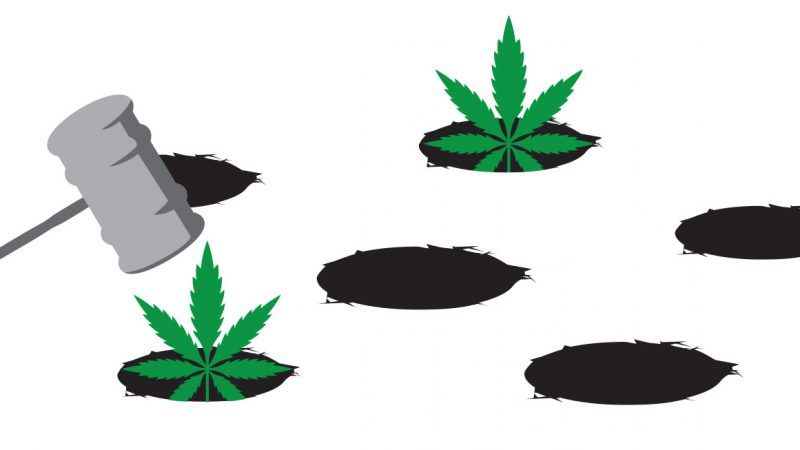Why Drug Interdiction Is Doomed to Failure

"I'm going to create borders," Donald Trump promised while running for president in 2016. "No drugs are coming in. We're gonna build a wall."
Halfway through his term, the president's faith in "the border wall" as a way of blocking the "pipeline for vast quantities of illegal drugs" was unabated, even as spoilsports noted that the supply comes in mainly through legal points of entry, making the wall irrelevant. And if stopping drugs at the southern border is a tall order, the prospect of intercepting them before they get there is even dimmer, as a study published recently in the Proceedings of the National Academy of Sciences demonstrates.
"The U.S. government's own assessments have long showed that interdiction has at best only an ephemeral impact on retail prices and supply," note University of Alabama geographer Nicholas Magliocca and his seven co-authors. "Wholesale cocaine prices in the United States have dropped significantly since 1980, deaths from cocaine overdose are rising, and the dismal rate at which counterdrug forces intercept cocaine shipments is well documented."
Critics cite two major reasons why interdiction fails: Pushing down drug trafficking in one place makes it pop up elsewhere (the "balloon effect"), and the threat of seizures scatters traffickers across a wider area (the "cockroach effect"). Magliocca and his collaborators built a computer model, NarcoLogic, that reproduces these phenomena and predicts cocaine trafficking patterns similar to what actually happened from 2001 to 2014, when the locus of smuggling operations shifted to Central America in response to interdiction efforts in Mexico and the eastern Caribbean.
NarcoLogic assumes that law enforcement agencies allocate their resources in a way they think will help them hit annual seizure targets (the current practice), while traffickers respond to those decisions, balancing profit against risk. Direct smuggling routes reduce operating costs but increase risk, while indirect routes with multiple nodes reduce risk but drive up costs. The interaction of these incentives, Magliocca et al. say, underpins a "complex adaptive system" that encourages the movement and spread of drug trafficking along with the collateral damage it causes, including "narco-fueled violence and corruption, infusion of unparalleled amounts of cash and weapons, dispossession and seizure of land from rural communities, and extensive and rapid environmental destruction."
In other words, the researchers write, "narcotrafficking is as widespread and difficult to eradicate as it is because of interdiction, and increased interdiction will continue to spread traffickers into new areas, allowing them to continue to move drugs north." Like drug prohibition, which motivates all manner of innovative and adaptive criminal activity, drug interdiction undermines itself.


Show Comments (55)